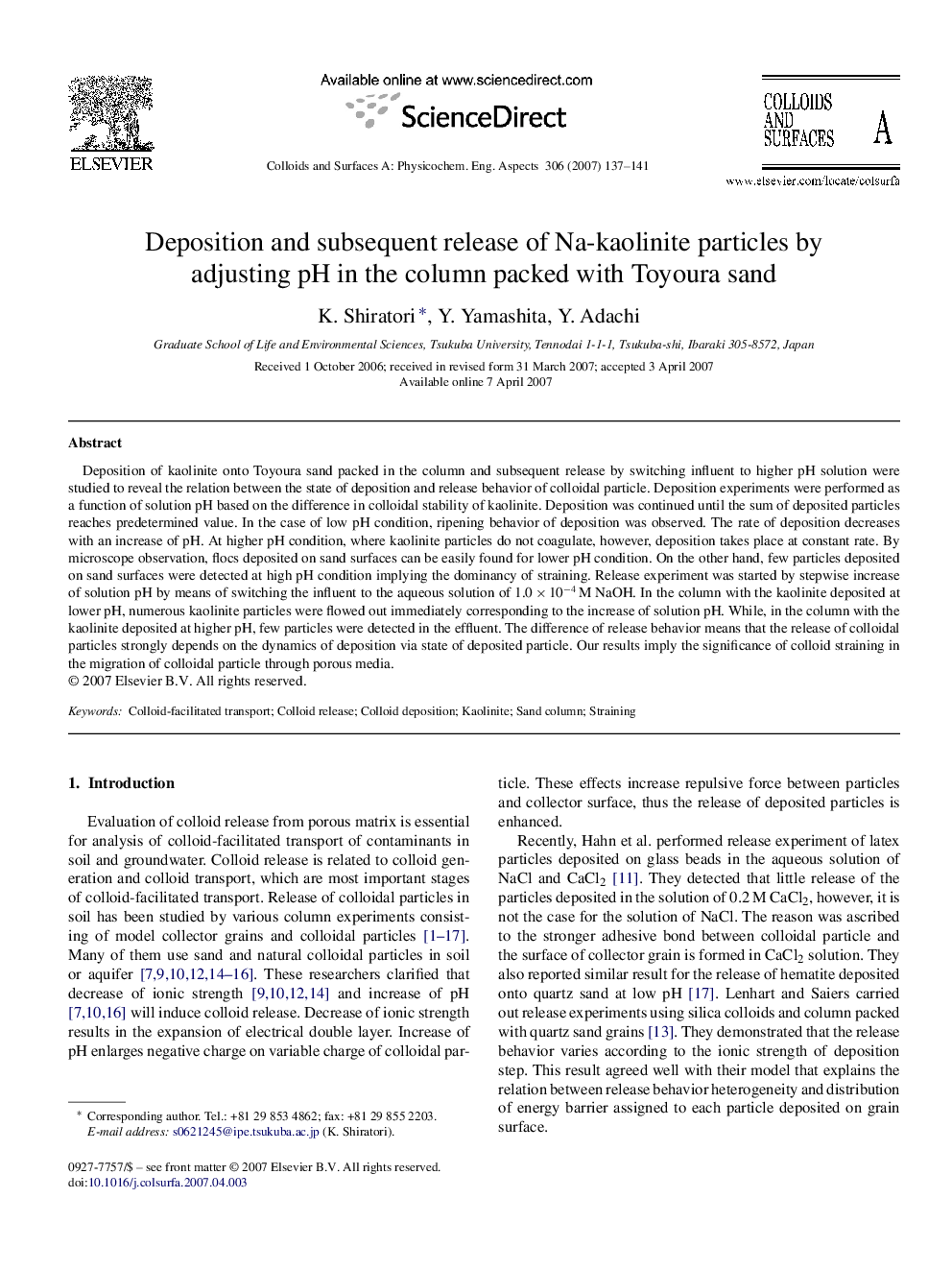| Article ID | Journal | Published Year | Pages | File Type |
|---|---|---|---|---|
| 597261 | Colloids and Surfaces A: Physicochemical and Engineering Aspects | 2007 | 5 Pages |
Deposition of kaolinite onto Toyoura sand packed in the column and subsequent release by switching influent to higher pH solution were studied to reveal the relation between the state of deposition and release behavior of colloidal particle. Deposition experiments were performed as a function of solution pH based on the difference in colloidal stability of kaolinite. Deposition was continued until the sum of deposited particles reaches predetermined value. In the case of low pH condition, ripening behavior of deposition was observed. The rate of deposition decreases with an increase of pH. At higher pH condition, where kaolinite particles do not coagulate, however, deposition takes place at constant rate. By microscope observation, flocs deposited on sand surfaces can be easily found for lower pH condition. On the other hand, few particles deposited on sand surfaces were detected at high pH condition implying the dominancy of straining. Release experiment was started by stepwise increase of solution pH by means of switching the influent to the aqueous solution of 1.0 × 10−4 M NaOH. In the column with the kaolinite deposited at lower pH, numerous kaolinite particles were flowed out immediately corresponding to the increase of solution pH. While, in the column with the kaolinite deposited at higher pH, few particles were detected in the effluent. The difference of release behavior means that the release of colloidal particles strongly depends on the dynamics of deposition via state of deposited particle. Our results imply the significance of colloid straining in the migration of colloidal particle through porous media.
